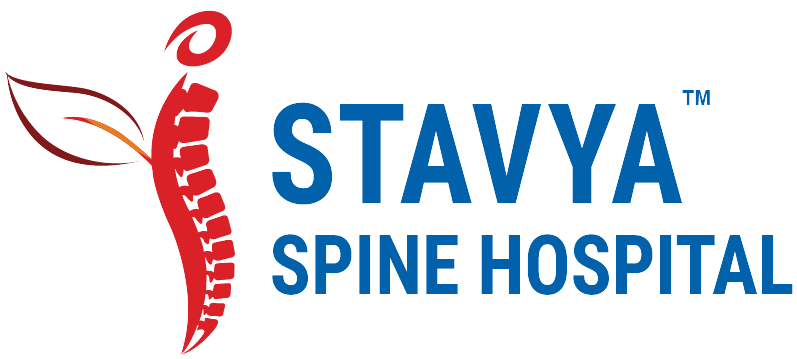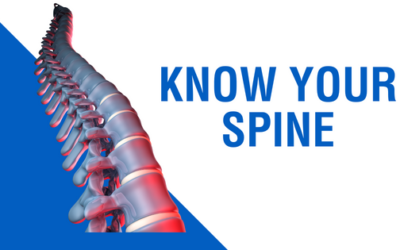The term “tandem spinal stenosis” (TSS) refers to compromised canal diameter in at least 2 distinct regions of the spine1. Historically, TSS describes the clinical scenario of symptomatic cervical and lumbar stenosis. TSS classically manifests with a constellation of myelopathy and concomitant lower-extremity symptoms secondary to lumbar stenosis. Dagi et al. helped to further define TSS as a clinical triad of symptoms of intermittent lower extremity claudication, gait disturbance, and upper and lower motor neuron signs2. Multiregional spinal stenosis (MRSS) is defined as spinal stenosis occurring concurrently in all three regions of the spine including the cervical, thoracic, and lumbar spinal segments.
Compression of nerve roots due to spinal canal stenosis leads to neurological symptoms. But in tandem stenosis because of compression at two or more different levels, the clinical presentation will be mixture of symptoms of all levels where spinal cord is getting compressed. This situation makes difficult for clinician to evaluate the most symptomatic level and plan the surgical treatment.
The reported prevalence of TSS ranges from 7.6% to 60%. It is more common in males as reported in many studies. The unusual presentation of combined upper and lower motor neuron signs and symptoms may promote the underdiagnosis of this condition. Some patients with TSS might be asymptomatic despite stenotic findings on imaging.
Although the etiology of concomitant cervical and lumbar stenosis is not clear, studies have shown an association between ossification of the posterior longitudinal ligament (OPLL) in any region and TSS3. Clinically, symptomatic TSS can impact surgeon decision-making and operative strategy. Decompression of a single region, staged decompressions (of the most symptomatic region first or of the cervical region first), and simultaneous decompressions have been described, although no consensus has developed in the literature.
Diagnosis of TSS is perhaps the most challenging obstacle. The relative paucity of literature regarding TSS compounded by the unusual presentation of combined upper and lower motor neuron signs and symptoms may promote the underdiagnosis of this condition. Therefore, the possibility of TSS should be included in the differential diagnosis of all patients presenting with cervical or lumbar stenosis. Furthermore, concerns regarding unrecognized TSS exist because of reported, although extremely rare, complications in which surgical positioning and intervention resulted in a neurologic deficit and plegia as a consequence of unrecognized TSS.
Kawaguchi et al. Found an association between hyperostotic lumbar stenosis and concomitant cervical stenosis to exist and they supported for whole spine imaging in patients with ossified spinal lesions3.
Bajwa et.al. concluded that the presence of congenital stenosis of the cervical spine is associated with congenital lumbar stenosis and vice versa4. Hsieh et. al. concluded that surgeons should maintain a high index of suspicion for TSS in patients diagnosed with OPLL and, if a staged surgical decompression approach is utilized, the cervical region should be addressed first as the majority of patients(67%)will experience resolution of lowerextremity symptoms and thus avoid a secondary lumbar decompression5.
Recently, several authors have advocated the use of single-stage surgery for the effective treatment of TSS. Krishnan et al. Retrospectively reviewed a consecutive series of 53 patients with combined cervical and lumbar stenosis6. The surgical procedures were performed in the prone position simultaneously using 2 operative teams.
The clinical impact of asymptomatic TSS can be profound. Patients with lumbar stenosis and asymptomatic cervical stenosis may progress to cervical myelopathy via the natural course of the disease. Alternatively, the signs and symptoms perceived as being due to symptomatic lumbar stenosis may in fact be sequelae of spinal cord compression and early cervical myelopathy7. In such cases, lumbar decompression alone does not address the true pathology and is therefore associated with poor clinical outcomes.
Epstein et al. found that all patients treated with primary cervical decompression had improvement in their lower extremity symptoms. When symptoms of myelopathy were present in conjunction with radiographic and clinical evidence of lumbar stenosis, primary cervical decompression was always performed8.
Recently, some surgeons have advocated for simultaneous decompression of both the cervical and the lumbar spine in patients with TSS. This approach utilizes 2 separate operative teams addressing the cervical and lumbar regions simultaneously. In the studies that have directly compared staged and simultaneous cohorts, the simultaneous approach resulted in shorter operative time and less blood loss, although there was no difference in clinical outcomes. Simultaneous decompression avoids the rare but devastating potential complication of undue compression of neural elements secondary to positioning in the setting of severe stenosis6.
Once TSS is diagnosed, its treatment is often based on a combination of surgeon and patient-specific variables with mutual discussion and understanding. Elderly patients having multiple pre existing medical conditions (Hypertension, Diabetes Mellitus, Asthma, Rheumatoid arthritis, etc) and diagnosed with TSS are prone for high rate of complications during and after the surgical procedure. Patients with TSS benefit more if appropriate treatment is given at right time.
Several treatment options exist, including conservative measures, decompression involving a single spinal region, or staged or simultaneous decompressions of both regions. Operative intervention, irrespective of the sequence or approach, has been shown to be efficacious; no preferred treatment modality has been established9. Surgeons should approach TSS with thoughtful caution, always addressing Cervical Spondylotic Myelopathy (CSM) as a priority and allowing symptomatology to guide therapeutic intervention9.
References:
- Teng P, Papatheodorou C. Combined cervical and lumbar spondylosis. Arch Neurol. 1964 Mar; 10:298-307.
- Dagi TF, Tarkington MA, Leech JJ. Tandem lumbar and cervical spinal stenosis. Natural history, prognostic indices, and results after surgical decompression. J Neurosurg. 1987 Jun; 66(6):842-9.
- Kawaguchi Y, Oya T, Abe Y, Kanamori M,Ishihara H, Yasuda T, Nogami S, Hori T, Kimura T. Spinal stenosis due to ossified lumbar lesions. J Neurosurg Spine. 2005 Oct;3(4):262-70.
- Bajwa NS, Toy JO, Young EY, Ahn NU. Is congenital bony stenosis of the cervical spine associated with lumbar spine stenosis? An anatomical study of 1072 human cadaveric specimens. J Neurosurg Spine. 2012 Jul;17(1): 24-9.
- Hsieh CH, Huang TJ, Hsu RW. Tandem spinal stenosis: clinical diagnosis and surgical treatment. Changgeng Yi Xue Za Zhi. 1998 Dec; 21(4):429-35.
- Krishnan A, Dave BR, Kambar AK, Ram H. Coexisting lumbar and cervical stenosis (tandem spinal stenosis): an infrequent Retrospective analysis of single stagesurgery (53 cases). Eur Spine J. 2014 Jan; 23(1):64-73.
- Bednarik J, Kadanka Z, Dusek L, Novotny O, Surelova D, Urbanek I, Prokes B. Presymptomatic spondylotic cervical cord compression. Spine (Phila Pa 1976). 2004 Oct 15;29(20):2260-9.
- Epstein NE, Epstein JA, Carras R, Murthy VS, Hyman RA. Coexisting cervical and lumbar spinal stenosis: diagnosis and management. Neurosurgery. 1984 Oct;15(4):489-96.
- Overley SC, Kim JS, Gogel BA, Merrill RK, Hecht AC. Tandem Spinal Stenosis: A Systematic Review. JBJS Rev. 2017;5(9):e2.


